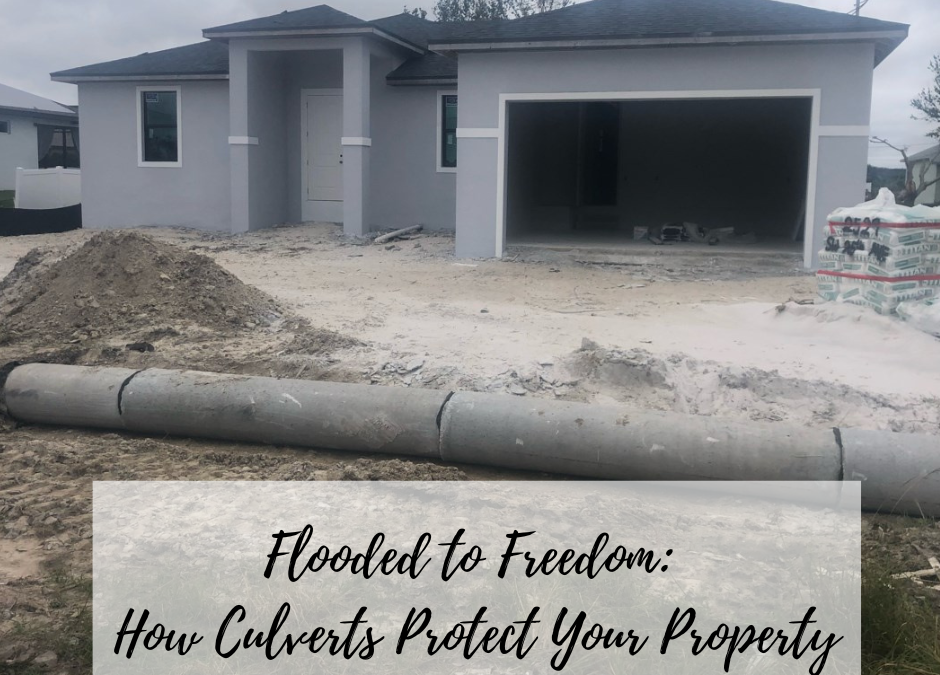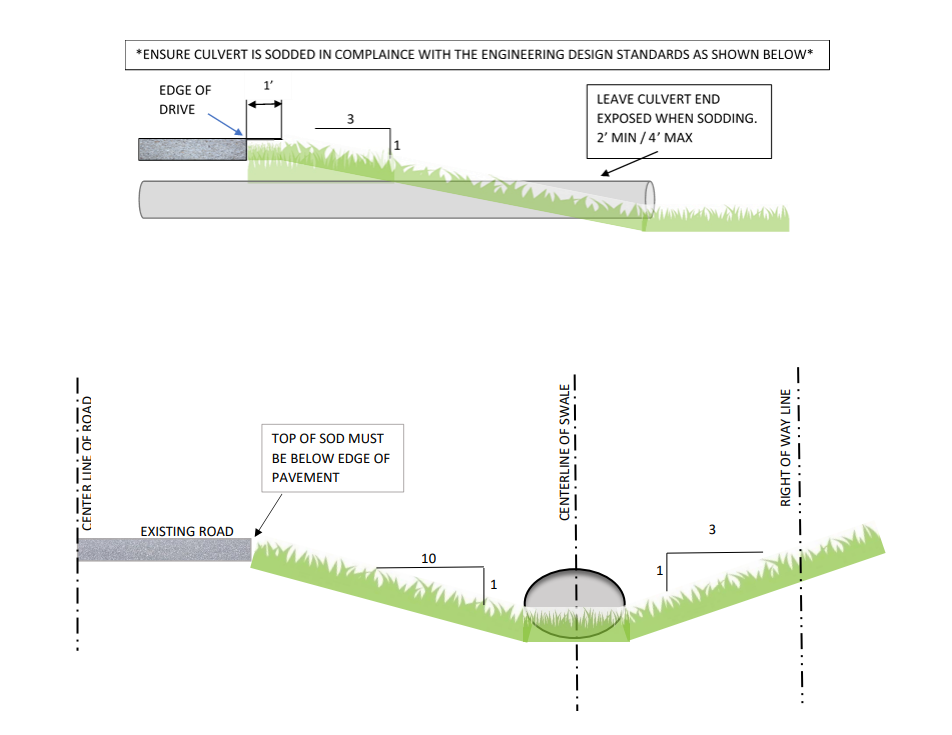Culverts are a type of drainage structure commonly used in home construction to manage the flow of water around and beneath a property. They are typically installed in areas where water tends to accumulate, most commonly along the edges of driveways or roads.
The Role of Culverts in Home Construction
Culverts play a crucial role in managing the flow of water around and beneath homes. They are installed in areas prone to water accumulation, such as along driveways and roads. Culverts come in various shapes and sizes, and they’re constructed using durable materials like concrete to channel water from one area to another without causing soil erosion or damage to surrounding properties.
How ARE CULVERTS Used in Home Construction?
In Southwest Florida, culverts are most used in residential construction for driveway crossings. They allow water to flow beneath the driveway instead of pooling on top, thus preventing erosion and damage to the driveway, as well as potential flooding of the property. Culverts can also be used to manage water flow in areas with steep slopes or natural drainage paths, directing water away from the home’s foundation towards designated drainage areas or retention ponds.
WHAT IS A CULVERT CUT SHEET
To ensure proper installation of a culvert, a cut sheet is developed by an engineer. The cut sheet provides specific details about the culvert’s required size, length, and grading requirements. It may also include information about the required slope or elevation of the culvert to ensure it meets specific requirements, standards and functions effectively over the long term.
Example of cut sheet:
PROPER INSTALLATION OF A CULVERT
Proper installation of a culvert for a driveway involves several steps to ensure it functions effectively. First, the area for the culvert is excavated to the required depth and width determined by a site plan reflecting proper drainage requirement. The culvert is then installed, ensuring its level and in line with the direction of the water flow, with a minimum of 6 inches of topsoil for stability. The space around the culvert is backfilled with suitable material, such as dirt, gravel, or crushed stone, and compacted. The driveway is then sloped to ensure water flows away from the driveway and towards the culvert. Final grading of the area is done to secure proper drainage and prevent erosion.
Conclusion
In conclusion, a culvert is a critical component of a home’s water management system, protecting both the home and driveway from water damage. It’s crucial to work with a builder who understands their purpose, can determine if they’re needed, and can install them properly to meet the needs of the property. Sposen Homes performs a lot inspection of the build property prior to any contract signing. Learn more about this FREE service today!


